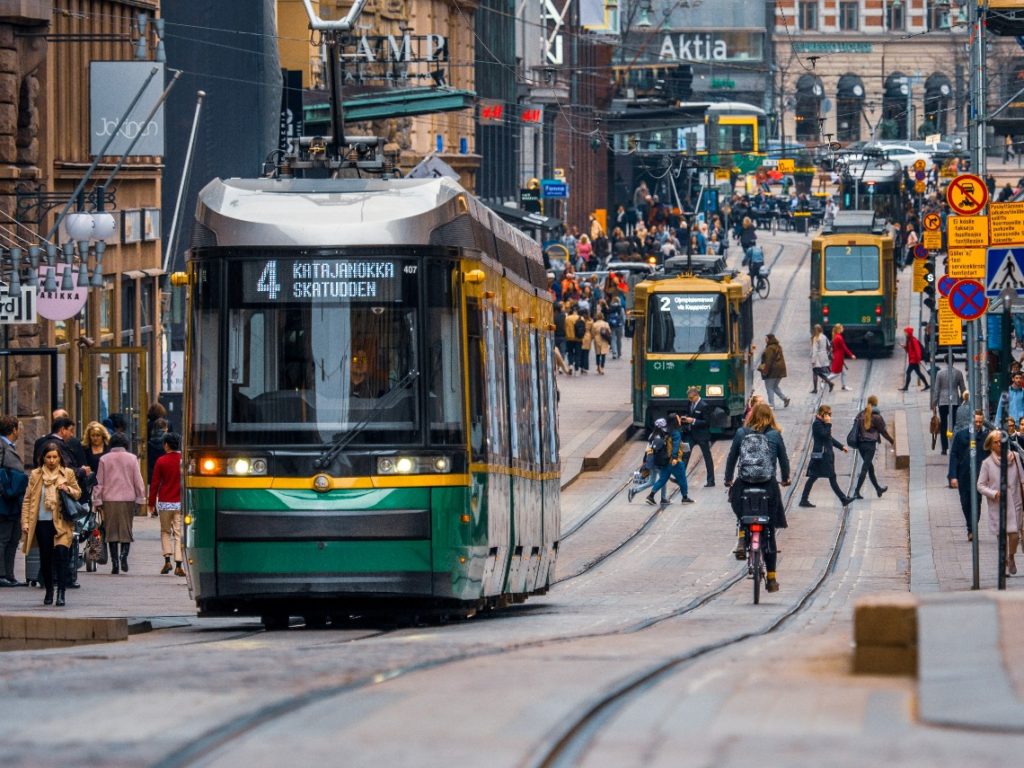A metaphor for achieving success

What could a bus station possibly have to do with motivating students? Or anyone for that matter.
Enter “The Helsinki Bus Station” Theory
The theory had its birth in a graduation speech made by American/Finnish photographer Arno Rafael Minkkinen.
There he aimed to inspire graduating students to believe in themselves, to think positively about their chosen careers (photography in this case), and not to be derailed by the views of others. That, he said, would be the difference between success, and failure.
Think Positively – Think Helsinki Bus Station – of course
The lateral thinking Minkkinen suggested to the graduates that all they had to do was understand the operation of the main bus station in Helsinki, and their success would be assured.
The metaphor was simple, perfectly-pitched, and easy to relate to.
One can only imagine every new graduate thereafter, spilling onto the bus station, and poring over the schedules in an effort to comprehend the theory, feeling assured that it would change their lives.
Analogy not clicked in yet? Simple, but you might not agree…
Come with me and try to imagine that main bus station. In your eyes it may be a little on the daggy side. Many bus stations are.
Or it may be bursting with state-of-the-art technology, and you can confidently hop on board, safe in the knowledge that you will reach your destination.
You get to choose your destination right from the get-go...
The message (caveat, if you will), is that, once you do so, you must stay on the bus!
How hard can that be? In his speech, Minkkinen aimed to impress upon the graduates that their careers and successes might hinge on how well they can understand and learn from, his metaphor for success.
Your turn to imagine…
There are two dozen platforms on the station, laid out in a square.
‘At the head of each platform is a sign posting the numbers of the buses that leave from that particular platform. The bus numbers might read as follows: 21, 71, 58, 33, and 19. Each bus takes the same route out of the city for at least a kilometer, stopping at (say three) bus stop intervals along the way.’
You pick a career direction – maybe you focus on making platinum prints of nudes – and set off
‘Now let’s accept that each bus stop represents one year in the life of a photographer, meaning the third bus stop would represent three years of photographic activity. Ok, so you have been working for three years making platinum studies of nudes. Call it bus number 21.’
You’ve worked hard on your art work and you are excited. You know you’re talented, and stand apart from the others in your field.
But when you present your portfolio to the curator of the Museum of Fine Arts in Boston, he asks if you are familiar with the nudes of Irving Penn , an eminent artists in the same field.
It was only a question!
But your heart sinks to your boots.
Your confidence ebbs. Did you choose the right pathway?
Three years of work, you realize, three years that you can never reclaim are now totally, and utterly wasted.
So what do you do?
You catch a cab straight back to the bus station!
You hop on another bus and you begin a whole new journey, a different photographic route, this time more determined than ever.
Another three years pass with the outcome pretty much the same as the first.
It’s now six years since you graduated with not a lot to show for it!
You were pretty sure this time, that yours was cutting edge stuff and this would be your breakthrough.
With a few expletives under your breath, you head straight back to the station to pursue yet another angle of photography.
This kind of response, if repeated often enough, will mean that, at the end of your working life, you will not have a damned thing to show for all you have done.
Yet it could have been otherwise.
Well what mistakes did you make?
Only one actually…you forgot to stay on the bus!
Here’s the harsh reality. Had you done that, stayed on the bus, people would have started to have a view on the differentiation in your work, to appreciate all the things that set your work apart from others, and you would have had the acclaim and following you deserved.
Minkkinen goes on to explain…
‘The buses that move out of Helsinki stay on the same line, but only for a while — maybe a kilometer or two. Then they begin to separate, each number heading off to its own unique destination. Bus 33 suddenly goes north. Bus 19 southwest. For a time maybe 21 and 71 dovetail one another, but soon they split off as well. Irving Penn is headed elsewhere.
‘It’s the separation that makes all the difference. And once you start to see that difference in your work from the work you so admire — that’s why you chose that platform after all — it’s time to look for your breakthrough. Suddenly your work starts to get noticed. Now you are working more on your own, making more of the difference between your work and what influenced it. Your vision takes off. And as the years mount up, and your work begins to pile up, it won’t be long before the critics become very intrigued, not just by what separates your work from a Sally Mann or a Ralph Gibson, but by what you did when you first got started.’
He urges all students to think about this…
The work you might have done twenty years ago could suddenly become acclaimed and quite valuable. You’ve made your mark. You’re a revered photographer.
Eventually your bus will come to a halt and you, the passenger, can rest. It may represent the end of your working life, your retirement, or your death, but your life’s work will be there for all to see, the imitations, the breakthroughs, the highs and the lows, and the distinguished, all because you chose to stay on the bus!
So what lessons can we take from this story?
- Have faith in yourself.
- Recognize what staying on the bus means.
- Accept that criticism and comparison are the chisels to help you improve.
- Use your energy to fuel improvement.
- Refine your craft.
- Learn to love your fellow passengers.
- Stay positive!
- Never give up.
The most important thing to remember is that, it’s not how hard you work. It’s not the hours you put in. But it has lots to do with working more cleverly and finding ways to improve your craft.
Choosing your bus is the first step. Staying on the bus for the long haul, and embracing your challenges is the second.
So just do it!
Stay on the bus!






